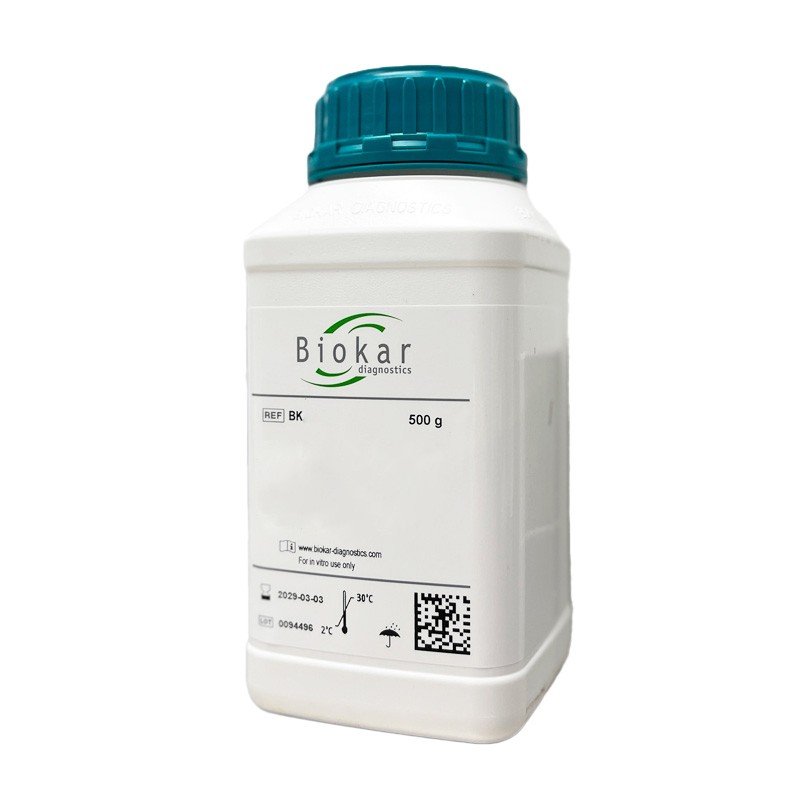- +Products
- +Allergen testing
- +Culture Media - reagents and reference material
- +Environmental testing solutions
- +Laboratory Consumables
- +Laboratory equipment
- +Microbiology equipment
- +Neogen® Food Safety Solutions
- +Temperature & Humidity Monitoring
- Services
- Support
- News
- +About Us
- Contact

Triple Sugar Iron (TSI) agar
TSI (Triple Sugar Iron) Agar is used for the identification of enterobacteria by the rapid detection of the fermentation of lactose, glucose (with or without gas production) and of sucrose, as well as the production of hydrogen sulfide.
The typical composition corresponds to that defined in the standards NF EN ISO 6579-1 and NF EN ISO 19250 for the detection of Salmonella spp..
Available in 500g package.
In compliance with regulatory requirements, a USDA permit (VS 16-3) is mandatory for shipments from Canada to the USA due to the inclusion of peptone, an animal byproduct.
Sugar fermentation results in an acidification which makes phenol red (pH indicator) turn yellow). The detection of bacteria fermenting only glucose is facilitated by decreasing the concentration of the sugar to 1/10 of that of lactose or sucrose, so that the small quantity of acid produced on the slant during fermentation is rapidly oxidized. This causes a rapid return to the red color or else a more pronounced re-alkalinization. The acid reaction (yellow color), on the contrary, is maintained in the depth of the agar, in the butt of the tube.
Bacteria fermenting lactose or sucrose will make the slant of the tube turn yellow.
Bacteria fermenting none of these sugars will not change the color of the medium.
The production of H2S is revealed in the butt by the appearance of black iron sulfide, due to the reduction of thiosulfate in the presence of ferric citrate. The production of gas (H2, CO2), resulting from sugar fermentation, is revealed by the appearance of bubbles or by the fragmentation of the agar.
Download



